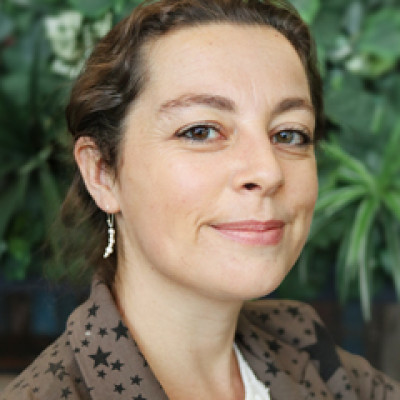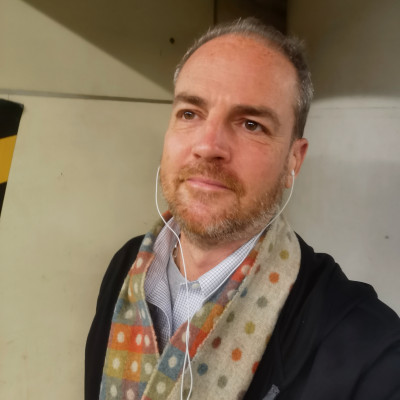Sessions / Poster Presentation (120 mins)
Collaborative ‘kaizen’ practice for better space/material design in a Japanese SAC #3591
Self-Access Centers (SACs) are environments designed to promote learners’ autonomy, and they have been playing an important role in language education worldwide. Supporting SAC users’ needs requires continuous effort and collaboration among stakeholders. Our SAC, situated in Japan, implements a continuous improvement (‘kaizen’) practice between learning advisors, administrative staff, and student staff in managing spaces and materials. In this poster presentation, we illustrate the process by sharing a recent, on-going project where the above-mentioned stakeholders take part in discussing ideas and implementing action plans. These ideas are related to some of the currently prominent themes in language education, such as technology use/online materials, inclusiveness, and multilingualism. Practical insights we share would provide educators developing and working in learning spaces beyond the classroom with possible ways to collaborate with their partners, as well as some of the themes that might be significant to meet the diverse needs of their learners.
Educating Students to Understand Genre: Awareness Rather than Acquisition #3603
Research, both recent and established, advises basing some language courses on genre, with a view to how it can empower learners to function in modern society. However, a distinction has been made between 'genre acquisition' and 'genre awareness' (Johns, 2008). The latter emphasizes ‘educating’ students to understand genre rather than just ‘training’ them: it develops "the rhetorical flexibility” that is more essential when learners come across new, unfamiliar, and/or hybridised genres, as opposed to simply reconstructing texts, usually based on a standardised sample of that genre in a very formulaic manner. However, teaching students to actually become genre-aware is challenging. In this poster, I will describe one such attempt, describing the course, its goals, and some example activities. Some representative work and subsequent reflections from the students are shown to demonstrate the relative success this course/activity had in achieving 'genre awareness'. Hopefully, this presentation will provoke thought and discussion, and encouragement.
Supporting CLIL Approaches with Simple English Wikipedia #3733
Wikipedias are online spaces for collaboration and the development and sharing of knowledge. The main English language Wikipedia presents several difficulties for language learners and instructors. Excessive jargon, specialisation, and uncontrolled language and style make many articles inaccessible for readers. Gatekeeping and a sometimes hostile culture can make contributing difficult to impossible. Simple English Wikipedia (SEWP) greatly reduces these barriers and aims to serve younger readers and English language learners by using controlled vocabulary and grammar. The wiki also provides spaces and tools for schools. This poster will dispel some of the criticisms of SEWP and demonstrate the affordances of this platform for student-student, student-instructor, and student-public cooperation in developing and using content-based or CLIL appropriate materials for the classroom and for independent learning.
Minecraft: PBL 21st-Century program proposal #3508
Launching in 2011, Minecraft’s popularity has continued to grow. The sandbox nature of Minecraft allows for incredible freedom in terms of competition, cooperation, solo, structured, semi-structured, or free-roam activities. The authors have taken their experience and student feedback from their 2-year long Minecraft project conducted through their university’s Self-Access Learning Center to propose a more formal course and/or certificate program. This program will focus on increasing students’ English-based 21st-century skills through a project-based framework. They have put together three possible program plans to better accommodate teacher and administrative needs, a full 16-week semester option, an 8-week elective course, and the most versatile, a 6-week certificate workshop. Overall academic goals are framed through a CEFR lens with various “can-do” milestones. Various outputs have been proposed such as a PBL learning journal, Minecraft co-op puzzle maps, Minecraft-theme “lifeboat exercises,” and having students create how-to tutorial videos.
Collaboration and distributed leadership to revise Academic Writing student learning outcomes #3634
This poster will describe the steps taken in an ongoing collaborative project involving lecturers and administration to revise the course outcomes of a second-year academic writing course at a private Japanese university. Outcomes for the course were initially based on a Multiliteracies framework (New London Group, 1996) to generate culturally and linguistically diverse students (Johnson et al., 2015). Starting in 2020, a distributed leadership approach (Hallinger & Huber, 2012; Spillane, 2006) was used to revise the course’s less practical or approachable existing outcomes. This approach allowed various stakeholders the opportunity to reflect on and assess the course curriculum and their teaching (Drago-Severson, 2008) and participate in formulating improved outcomes based on those practices. Presenters will describe the process as a model for feasible and achievable distributed leadership. Research findings demonstrate teachers’ and students’ understanding of the finalized, new outcomes and how available materials connect to different outcomes.
Lessons from the pandemic: Implementing responsive professional development looking towards the future #3398
Recent years have seen a marked shift in how education is being conducted, especially regarding technology use when online teaching became the norm during the pandemic. The presenter is a member of a team overseeing professional development for a large department of English-speaking educators at a Japanese university. Their poster will describe the implementation of emergency remote teaching (ERT) support in 2020, with particular focus on a) how it utilized teacher input and emphasized collaboration and b) how the lessons from this period have been applied to subsequent professional development support activities. Some of the takeaways that have continued include an informal technology troubleshooting chat group, an online forum for sharing materials, ideas, and resources, the use of technology guidebooks, and orientations. The efforts have enabled a smooth transition to hybrid as well as face-to-face lessons, and have informed policy decisions aimed at ensuring the continuation of quality education.
ELF experience and its effects on L2 learners’ attitudes to translanguaging: A case study in Japan #3542
English medium instruction (EMI) for teaching language courses is a growing global phenomenon, but the use of the learners’ L1—or translanguaging—as a resource in language classes remains controversial. While teachers’ attitudes toward translanguaging have been explored in numerous studies, fewer attempts have been made to examine learners’ perspectives on their teachers’ translanguaging practice in an EMI setting. This study collected interview data from 91 Japanese college students and categorized the transcribed recordings using thematic analysis. The results indicate that (a) approximately two-thirds of the interviewees hold a negative view on teachers’ use of translanguaging and (b) such preferences correlate with past experience of international communication but not with L2 proficiency. Main reasons for supporting or rejecting teachers’ translanguaging are discussed in relation to why teachers’ decision to translanguage needs to be context-driven and how/what translanguaging techniques can be put into practice to help maximize L2 learners’ communicative potential.









